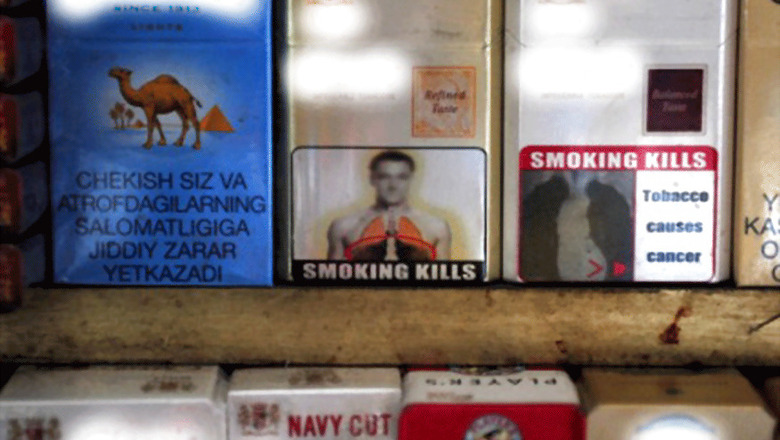
views
If you ever wonder about the power of the Right To Information (RTI) Act, this should be the answer.
It was just one RTI application, which has demolished the central government’s entire case in support of pictorial health warnings to cover 85 percent of cigarette boxes and other tobacco products.
The RTI application, filed in August 2016, had asked the Union Health Ministry three questions:
• Whether the pictorial warning is a real image of a human being or a representational one?
• Who provided the images to the department for the purpose of prescribing the pictorial warning?
• How many medically approved cases have been detected in India where the patients with mouth cancer have suffered the damage equal
to the damage shown in the pictorial warning?
The ministry had a common answer: “No such specific information/data is available.”
The RTI reply from the government convinced the Karnataka High Court that the ministry lacked reasons why the pictorial health warning should cover 85% and not 40%, as it was before the 2014 regulation, and hence the regulations were quashed.
“The aforesaid answers clearly establish that there was no scientific approach adopted while choosing 85% as the size of the warning. No material has been placed before this court by the respondents to establish that if the size of the warning is 85%, it would have the effect of dissuading smokers or potential smokers from using/consuming tobacco products,” held the HC division bench.
Both the judges on the bench, Justice BS Patil and Justice BV Nagarathna, felt persuaded that the RTI response has disclosed that no methodical or reasoned approach was followed by the Health Ministry before prescribing the 85% pictorial health warning norm under The Cigarettes and Other Tobacco Products (Packaging and Labelling) Amendment Rules, 2014 (COTPA).
This regulation, which has now been quashed by the HC, had come into effect from April 1 last year following a spate of protests from tobacco industries.
Citing the RTI application, Justice Nagarathna held: “It becomes clear that neither was there any basis nor any application of mind to prescribe specified health warning to be 85% of the principal display area on both sides of the package. In the absence of there being any material, which has been considered by the Ministry of Health and Family Welfare, I find prescription of 85% of the principal display area of the package containing the specified warning is arbitrary and in violation of Article 14 of the Constitution.”
Writing a separate but concurring judgment, Justice Patil also relied upon the RTI reply to hold that the amendment rule was bad in law and could not be sustained.
“As is evident from the reply dated 27.09.2016 given pursuant to an RTI Application dated 26.08.2016, there was no concrete material available before the Health Ministry based on which decision was taken to prescribe the pictorial warning. This amply demonstrates that uniform prescription of 85% specified warning in respect of all these tobacco products was devoid of any basis,” said Justice Patil.
The bench also dismissed the government’s argument that the size of the warning was a matter of policy, in which courts may not interfere.
The judges pointed out that a balance would have to be struck between the right to advertise on the package -- as a right under Article 19(1) (g) for the freedom to carry on trade and commerce -- and the reasonable restriction on exercise of this right.
Deciding a bunch of petitions, the HC has recently quashed the new regulation which required the tobacco packets to have 85% pictorial health warning on them. Appeal against this order has been moved in the Supreme Court, which will take up the matter on January 8.



















Comments
0 comment